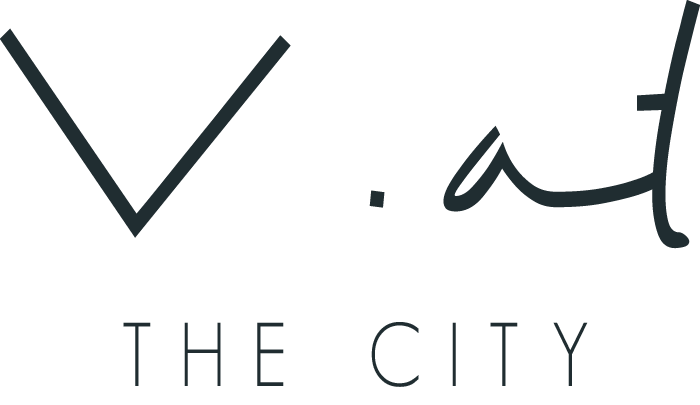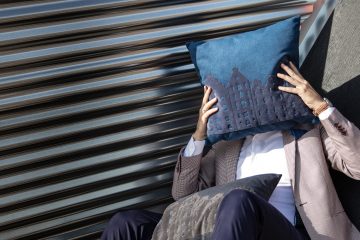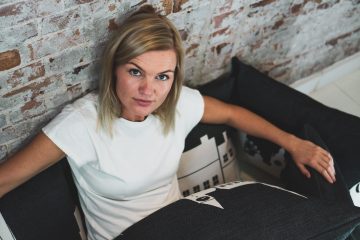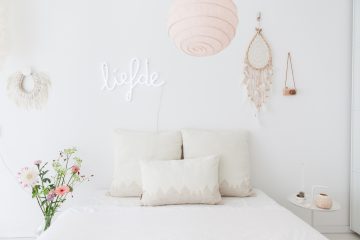The letter “V” in V. at The City stands for Veronika Utasi, designer and owner of the brand. How did she, as A young Hungarian woman, endED up in the Netherlands, what inspires her designs and why is she so determined to be a social entrepreneur? This interview will give all the answers.
Strength and vulnerability
The birth of Venus’ by Sandro Botticelli is one of the first pieces of art that deeply impressed Veronika when she was about 20 years old. “This pure, feminine power when Venus rises out of the sea and at the same time the vulnerability of her being nude; I found that fascinating.” Vero wanted to see the painting with her own eyes and decided to travel to Florence.
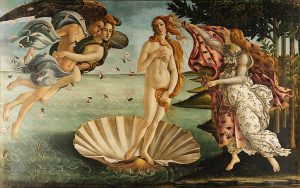
“I bought a giant poster of that painting. It has been hanging on my bedroom-wall for years. I do hope that the vulnerable women who work for V. at the City rediscover their strength, by doing a meaningful job in a comforting work environment. This will not be sufficient but it often does accelerate a positive change.”
Her clay statues, aquarelles and other ‘creations’ she made at her school in Hungary earned her all sorts of prizes. Not surprisingly, the school recommended her to go to the Art Academy. Which she didn’t. Veronika: “At that time, just after the fall of the communism in Hungary, we mainly sought financial security. The life of an artist is often harsh and comes with insecurity. I had good grades, hence I decided to study Management & Tourism. A very well-considered choice.”
From an office to a pillow
As a student Veronika was sent off to the Netherlands for an exchange program. She ended up at the carnival party in Breda and bumped into a very nice Dutch guy. Deeply in love and freshly graduated she exchanged Hungary for the Netherlands in 2005.
You developed an impressive business career. Why did you leave all that behind and decided to become a designer; not the most ‘secure’ profession?
“Without really noticing it, I drifted towards a type of work that wasn’t for me. Too many projects and analysis and not much to do with people. I lost someone I loved and ended up having a burn-out. Then, I kind of reinvented myself. Space entered my head and I dared to think about something else. I discovered I wanted to do things for other people. My creativity also revived. I decided to design items that were not too complicated so they could be produced by the people I wanted to help. That’s how my plan evolved. In 2014 I launched my first Amsterdam pillow under the V. at Amsterdam brand name. “
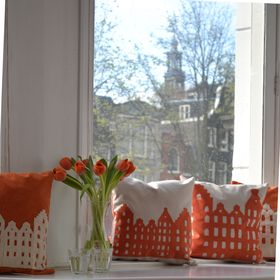
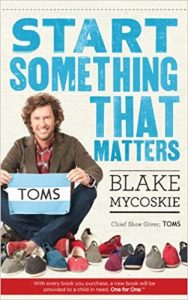
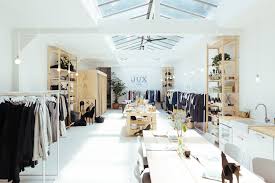
The earrings of your home
Why designing pillows?
“I love pillows! They are a small but defining element of your home; they are the earrings of your home. The pillows I design are like a soft landing or a warm cuddle/hug when you come home. Besides it is a product for that I can control and decide on the design and production. I need this form of independence, which, by the way, is a learning process. I tried other products for example like wooden toys (Nootje, named after my daughter Noa) and specific colors for the pillows, which didn’t work at all. It was difficult to say goodbye to the creations I so strongly believed in. But, I need to focus on what works well. As a start-up with limited financial means a miss can have a huge impact on your business.”
Inspired by the city
Your brand name V. at The City, your pillows and recently your Amsterdam Wall-map. You are a real city girl?
“I live in the centre of Amsterdam with my husband and our two children. I get inspired by Amsterdam but also by other cities and buildings in general. I love wondering around the city without a clear goal; just to follow my intuition. This is when inspiration arises and brings me a concept. I draw and I use photos of buildings to get to my final design. Thereafter, I choose the fabric for the pillows and work out the details for the manufacturing process. The Wall-map featured a completely different design process. I first drew the map, had it digitalized and then printed it.”
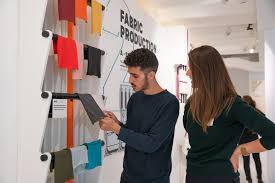
Creating maximum value
What role does sustainability play in your designs?
“I use certified materials. I check where they are produced and they are all Oeko Tex 100 certified. I would love to use more recycled materials in the future. I would love for recycled materials to meet my requirements: soft, dirt-repellent, certified, washable and available in multiple colors. Unfortunately, I have not found any recycled fabric with these qualities.
Everything you produce, even on the smallest scale, has an impact on the environment. I strive to minimize the ‘damage’ and maximize the value I create. So, I try to source, produce and sell locally. I monitor who is producing, how and where. The fabrics I use should last for generations and I aim at making timeless designs. “
The soul and the fingerprint
You are very fond of (traditional) craftsmanship. Why?
“In our fast paced world we seem to be very result driven and multitasking all the time. Craftsmanship is about the process rather than efficiency. Attention, knowledge and experience are important aspects. This results in the fact that the sole and the fingerprint of the makers can be found in their craftworks. I want this for my products. It makes them more expensive, but I wouldn’t want it any other way.”
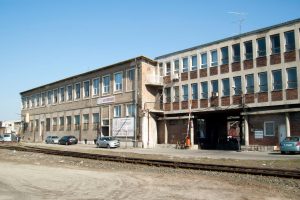
Design and the future
Do you see a development in your designs?
“I created my first Amsterdam pillow in 2014. Three years later I was ready for a change. I designed the Amsterdam Wall-map, based on artisanal printing techniques. That design has a completely different style, it’s graphical and more abstract.
I don’t want my designs to be ‘just’ beautiful; I want them to tell a story. In the Wall-art I incorporated symbols, like two crossed joints, representing the increase in ‘cheap’, mass tourism and the champagne glasses along the canals as the prices of the houses there are sky rocketing. There are plenty of city maps showing Amsterdam’s highlights, but mine is an interpretation.
Another development is my co-operation with colleague and designer Rein Ridder. We designed eight new city pillows together and that has been a very joyful and successful collaboration.”
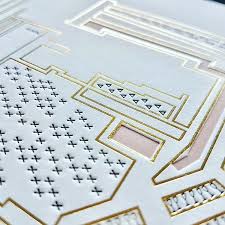
Will you still be designing when you are 65?
“That’s hard to say. Being a designer is not a goal in itself for me. I enjoy the combination of creating beautiful and sustainable products and helping people. I do foresee collaborations with designers in other cities. However, I would like to be in control what we will design and how we will produce it.”
Author: Rozemarije Zijlmans
Please read the Dutch version below
Interview met Veronika Utasi – ontwerpster achter het merk V. at The City
De letter “V” in V. at the City staat voor Veronika Utasi, ontwerpster en eigenaresse. Hoe zij als Hongaarse in Nederland is beland, wat haar inspireert bij het ontwerpen en waarom ze per se sociaal wil ondernemen lees je in dit uitgebreide interview.
Krachtig en kwetsbaar
‘De geboorte van Venus’ van Sandro Botticelli is het eerste kunstwerk dat grote indruk achterlaat op Veronika als ze 20 jaar oud is. “De pure vrouwelijkheid en de kracht waarmee Venus uit het water komt en tegelijkertijd de kwetsbaarheid van haar naakt zijn; dat vond ik zo prachtig.” Ze wilde het schilderij in het echt zien en reisde er speciaal voor naar Florence. “Daar heb ik een reusachtige poster van het schilderij gekocht. Hij heeft jarenlang boven mijn bed gehangen. Ik hoop dat de kwetsbare vrouwen die werken bij V. at The City hun kracht terug kunnen vinden, door zinvol werk te doen in een fijne werkomgeving. Dat alleen is niet voldoende, maar het versnelt vaak wel een positieve verandering.
Met haar aquarellen, beelden van klei en andere creaties won Veronika als kind al allerlei prijzen op school in Hongarije. Haar school adviseerde haar om de kunstacademie te gaan doen. Toch volgde zij dat advies niet op. Veronika:” In Hongarije zochten we in die tijd, nog maar net na de val van het communisme, vooral financiële zekerheid. Het artiesten bestaan is moeilijk en onzeker. Aangezien ik goede cijfers had op school leek het me beter een vak te gaan leren en mijn creatieve kant voor mijn hobby’s te gebruiken. Dat was een hele bewuste keuze.
Van kantoor naar kussen
Tijdens haar studie Bedrijfskunde en Toerisme was Veronika op uitwisseling naar Nederland. Ze belandde in het Bredase carnaval en ontmoette een leuke Nederlander. Zwaar verliefd en met diploma op zak verruilde ze in 2005 Hongarije voor Nederland.
Je bouwde hier aan een mooie carrière in het zakenleven. Wat bezielde je om die comfortabele kantoorbaan achter je te laten en ontwerpster te worden?
“Ik denk dat ik ongemerkt een kant op was gegaan qua werk die niet bij mij paste. Te veel projecten en analyses en te weinig met mensen. Ik verloor een zeer dierbaar iemand en raakte in een burn-out. Toen heb ik als het ware mijzelf opnieuw uitgevonden. Ik kreeg ruimte in mijn hoofd en durfde te denken aan iets anders. Ik wilde iets doen voor anderen. Daarnaast kwam mijn creativiteit terug. Ik besloot ontwerpen te maken die niet heel complex zijn, zodat ze vervaardigd kunnen worden door de mensen die ik wil helpen. Zo groeide mijn plan. In 2014 zette ik mijn eerste Amsterdam kussen in de markt onder het merk V. at Amsterdam.
De oorbellen van je huis
Waarom heb je besloten om kussens te ontwerpen?
“Ik hou van kussens. Een kussen is een klein maar bepalend onderdeel van het interieur; de oorbellen van je huis. Mijn kussens zijn een zachte landing of fijne knuffel als je thuis komt.
Daarnaast is het een produkt waarvan ik zelf het ontwerp en de produktie kan bepalen. Dat gevoel van onafhankelijkheid is voor mij belangrijk. Dat is trouwens wel een leerproces. Ik heb ook andere produkten uitgeprobeerd, zoals houten speelgoed (Nootje, vernoemd naar mijn dochter Noa) of bepaalde kleuren voor de kussens, die helemaal niet bleken te werken. Het is dan moeilijk om afscheid te nemen. Maar ik moet blijven focussen op wat goed loopt. Als startende ondernemer doe je alles met weinig geld en de impact van een misser is groot.”
De stad als inspiratie
Je merknaam V. at The City, je kussens en sinds kort ook je Wall-map van Amsterdam. Je bent een echte citygirl?
“We wonen met ons gezin in het centrum van Amsterdam en ik haal de inspiratie vooral uit Amsterdam, maar ook uit steden en gebouwen in het algemeen. Ik vind het fijn om in een stad rond te lopen zonder doel, mijn intuïtie te volgen. Dan komt de inspiratie vanzelf en bedenk ik een concept rondom de stad. Ik teken en gebruik foto’s van de gebouwen om tot een ontwerp te komen. Vervolgens kies ik de stoffen voor de kussens en de produktie-techniek. De Wall-map is een heel ander ontwerpproces dan de kussens. Die kaart heb ik eerst getekend en later laten digitaliseren voordat we het gingen drukken.
Zoveel mogelijk waarde creëren
Op welke manier speelt sustainability een rol in jouw ontwerpen?
“Mijn materialen zijn duurzaam; ik kijk naar hoe en waar ze worden geproduceerd en ze zijn Oeko Tex 100 gecertificeerd. Maar het kan nog duurzamer hoor. Bedrijven die bijvoorbeeld recycled materialen gebruiken. Ik zou ook recyclede stoffen willen gebruiken indien ze voldoen aan mijn eisen: zacht, vuilafstotend, gecertificeerd, wasbaar en in verschillende kleuren beschikbaar. Helaas heb ik tot op heden nog geen gerecyclede stoffen gevonden met deze kwaliteiten.
Alles wat je produceert, hoe kleinschalig ook, heeft een impact op de omgeving. Ik probeer met zo min mogelijk ‘schade’ zoveel mogelijk waarde te creëren. Dus probeer ik lokaal in te kopen, te produceren en te verkopen. Daarnaast kijk ik bij het maken door wie het wordt gemaakt, onder welke omstandigheden en waar. Ook moeten de stoffen generaties lang meegaan en streef ik naar een tijdloos design”.
De ziel en de vingerafdruk
Je vind het mooi om met (traditionele) ambachten te werken. Waarom?
“In onze snelle wereld zijn we continu aan het multitasken en vaak erg resultaatgericht vind ik. In ambacht gaat het meer om het proces en niet om de efficiëntie. Aandacht, kennis en ervaring zijn belangrijk. Uiteindelijk vindt je de ziel en de vingerafdruk van de persoon terug in het werk. Het maakt mijn produkten duurder, maar ik zou het niet anders willen.”
Ontwerp en toekomst
Zie je een ontwikkeling in jouw design?
“Mijn eerste Amsterdam kussen heb ik in 2014 gemaakt. Drie jaar later was ik toe aan iets nieuws en ontwierp ik de Amsterdam Wall-map gebaseerd op ambachtelijke druk-technieken. Dat werk heeft een heel andere stijl, het is veel grafischer en abstracter.
Bovendien wil ik graag dat mijn ontwerpen niet alleen mooi zijn maar ook een verhaal vertellen. In de Wall art zitten symbolen verwerkt, zoals kleine gekruiste joints die staan voor het toenemende goedkope drugs- en massatoerisme en champagneglazen bij de grachtengordel, vanwege de stijgende prijzen van de woningen. Niet iedereen zal dit direct snappen. Er zijn genoeg city-maps waarop je de highlights van Amsterdam kan vinden, maar die van mij is een vertaling. Daarnaast ben ik ook gaan samenwerken met mijn collega-ontwerper en alles kunner Rein Ridder. Met hem heb ik de 8 nieuwe steden ontworpen en dat is heel goed bevallen.”
Ben je nog aan het ontwerpen op je 65e?
Dat vind ik lastig om te zeggen. Ontwerpen is voor mij geen levensdoel op zich. Het gaat mij om de combinatie van mooie, duurzame produkten maken en mensen helpen. Ik zie mijzelf ook met ontwerpers uit andere steden samenwerken en collecties bedenken. Maar wat we maken en hoe wil ik zelf blijven bepalen.
Auteur: Rozemarije Zijlmans
